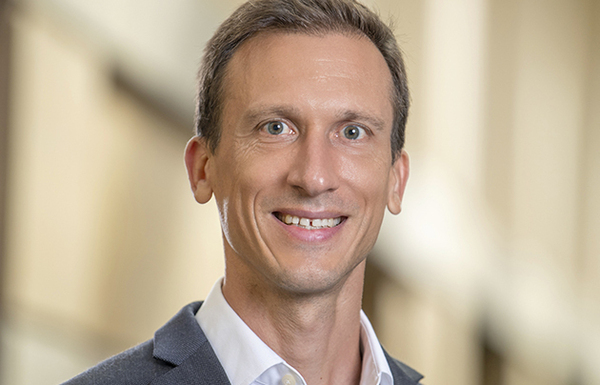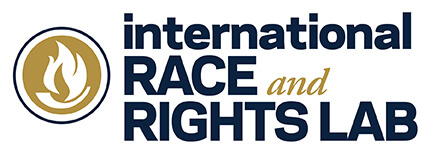
Zoltán Búzás, Associate Professor of Global Affairs at the Keough School, focuses his research on human rights, race and international politics, and international law and norms. In this interview, Búzás discusses his approach to research and his new initiative, the International Race and Rights Lab.
You’ve joined the Keough School to bring an international perspective on matters of race and human rights more generally. How do your research interests support and broaden our work at Klau?
One of my favorite things about the Klau Center for Civil and Human Rights is that it connects domestic civil rights and international human rights. This integrative vision has long recognized that race cannot be reduced to a domestic issue. In contrast, most academic research examines racial problems in the domestic context. The Klau Center’s vision reminds us that this focus is incomplete. The global wave of anti-racist protests in 2020 and the UN Human Rights Council’s criticism of the US in the wake of George Floyd’s killing are just two recent examples that support this point. My work aims to reinforce the integrative dimension of studying race and rights from an international perspective. I also hope to extend this work in two ways. Empirically, I examine how race, racism, and anti-racism work in a variety of cases, from discrimination against European Roma to the racial politics of Sino-American relations. From a disciplinary perspective, as a political scientist I tend to emphasize the political angle of the problems I examine, even when I draw on multiple disciplines. In these ways, I hope to contribute to the invaluable work of the Klau Center and complement the excellent work of colleagues there and the Keough School more broadly.
An exciting new initiative is under way at Klau, your International Race and Rights Lab. Tell us what you hope to investigate in the lab and how students will be involved.

As its name suggests, the International Race and Rights Lab has a unique focus. It approaches the right to racial equality from an international perspective. There are many research labs in the world but the vast majority emphasize international human rights and omit race or center on domestic racial problems and overlook the international realm. Given this landscape, our lab stands out as bridging the international and the racial. I would like to thank the Klau Center for adopting my incipient lab idea and helping make it a reality. I believe the lab can become a leading venue for the international study of race and rights.
Its success depends largely on building a community around it. This community would center on Notre Dame students. The lab would benefit immensely from their work. In turn, their involvement will expose students to the fundamentals of advanced research, from writing literature reviews and formulating theoretical expectations to assessing these expectations in light of carefully collected evidence. In the process, students will acquire skills that can be helpful in their future careers. And working together will afford me opportunities to get to know our students and mentor them better. I also hope to expand the lab community beyond ND by inviting junior scholars from other institutions for workshops on race and rights. Over time, I hope we can build a community of people who share an interest in international race and rights. My vision is that the work produced and the people involved will contribute to taking race and rights more seriously in the international context.
"The argument reminds us that the good news about law compliance is not necessarily good news about human rights."
Your book, Evading International Norms: Race and Rights in the Shadow of Legality, frames the violation of human rights norms in a unique way. Can you explain your approach, and why you think it’s important?
In a nutshell, Evading International Norms centers on human rights violations that are “lawful but awful,” a form of action I also call “evasion.” Its key conceptual move is to approach human rights as dual legal-normative objects in that they are embedded in and guide action through both laws and social norms. Laws are more formalized rules that help us determine what actions are lawful and unlawful, whereas social norms are less formalized rules that help us determine what actions are appropriate and inappropriate (or awful). While laws and norms overlap and shape each other, they are not necessarily coextensive. As a result, actions that comply with the law and are lawful can violate social norms and can be seen as wrong or “awful.”
Most of us are familiar with this sort of behavior (think of “loopholing”), but in my view it has received insufficient attention among scholars of human rights. Evading International Norms is an attempt to bring more attention to this category of human rights violations. Actors can use lawful but awful actions to violate human rights without technically violating the law. In this way, they can satisfy human rights opponents without paying the legal costs of doing so, and might even placate some human rights supporters who equate legal behavior with good behavior.
This approach is important for three main reasons. One is that it sheds light on a type of subtle but damaging human rights violation that can go unpunished by the law. The argument reminds us that the good news about law compliance is not necessarily good news about human rights. Despite the proliferation of human rights law and states’ (technical) compliance with it, problems such as racial inequality persist in part because of lawful but awful actions. As the reach of human rights law expands and legitimacy increasingly becomes a function of compliance with the law, powerful actors with excellent legal counsel will increasingly avoid blatant violations of human rights law and instead will undermine human rights in ways that are technically lawful. Therefore, it is imperative that we recognize this sort of action as problematic.
Another reason the book is important is that it offers guidance about how to counter lawful but awful actions. It provides us with the awareness and language necessary to criticize such actions. The argument cautions against overreliance on legal tools when facing these actions. Evasion’s technical legality can insulate states from adverse court rulings, but can be more vulnerable to shaming and political mobilization.
Third, the book draws attention to racial discrimination against the Roma population in Europe. Most of us know relatively little about the Roma, one of Europe’s largest and most marginalized minorities. The book aims to shed light on their plight through rich case studies of the French expulsion of Roma immigrants (2007-2017) and the Czech segregation of Roma children in schools for those with mental disabilities (1993-2017). It employs a wealth of sources, including the analysis of over 370 court rulings and over 160 semi-structured interviews with government officials, activists, legal experts, and bureaucrats at international organizations. It joins other scholars whose aim is to move beyond romanticized views of the Roma.
"I hope that my teaching will engage both students who are pursuing a formal human rights curriculum, and students who are pursuing other courses of study, but who are interested in how questions of human rights are relevant to their chosen fields."
You’ve said that teaching is an important priority for you, at both the undergraduate and graduate level. Can you talk a bit about your approach to teaching? What ideas are you eager to engage our students in?
Few things are more energizing than teaching a good class. A vibrant class discussion on a pressing issue or an original comment from an otherwise quiet student makes my day. This is my first term teaching at Notre Dame, but my sense is that such occurrences are frequent. It is a privilege to teach such terrific students.
I offer courses on international human rights. I like to complement classic topics about the emergence and effectiveness of human rights institutions with timely matters related to the environment, artificial intelligence, and the authoritarian revival. Given my research on racial equality, this topic features prominently in my teaching as well.
We study material that balances conceptual sophistication and rich factual information, theory and policy, historical and current problems, as well as analytical and moral questions. To make my courses more interactive and engaging, I supplement lectures with in-class debates, an intricate simulation on transitional justice, and occasional guest lectures by remarkable individuals with vast human rights advocacy experience. When appropriate, I share personal accounts of my experiences growing up in Communist Romania (Transylvania, to be more precise), experiences during the 1989 revolution, and the subsequent transition to democracy and capitalism. I hope that my teaching will engage both students who are pursuing a formal human rights curriculum, and students who are pursuing other courses of study, but who are interested in how questions of human rights are relevant to their chosen fields.
"When visiting Roma shanty towns in France, I was deeply touched by families whose deep poverty is inversely correlated with their incredible hospitality."
Human and civil rights can be sobering subjects. Where do you draw inspiration for your work? Are there any hopeful signs that keep you moving forward?
I would like to start by acknowledging that, all else equal, the distribution of burden inflicted by human and civil rights violations is incomparably lighter on scholars of human rights compared to advocates and victims. The first source of inspiration for me comes from victims and advocates broadly understood. I have been impressed by the brave example of opponents of the Romanian Communist regime, who risked their lives and spent decades in horrendous prisons before their efforts helped bring about the 1989 democratic revolution. Many friends I met through the Open Society Foundations work tirelessly on very challenging issues, from human trafficking to authoritarianism and environmental problems. When visiting Roma shanty towns in France, I was deeply touched by families whose deep poverty is inversely correlated with their incredible hospitality. And Catholic parishioners often mobilized to provide for their basic needs, in an expression of radical love. Remarkable individuals living out Catholic social teaching, such as Sister Helen Prejean’s work on the death penalty, is also tremendously encouraging. They have been inspired by the Scripture, and so have I.
In closing, I would have liked to say that I root my hopefulness much deeper than in potentially fleeting improvements in particular issue areas. Unfortunately, I rarely approximate the church banner I walked by every Sunday during the early phase of the pandemic, which read: “Relentlessly hopeful.” Therefore, I find it particularly helpful to combine the sources of inspiration above with reminders of improvements in human rights conditions, wherever they occur.